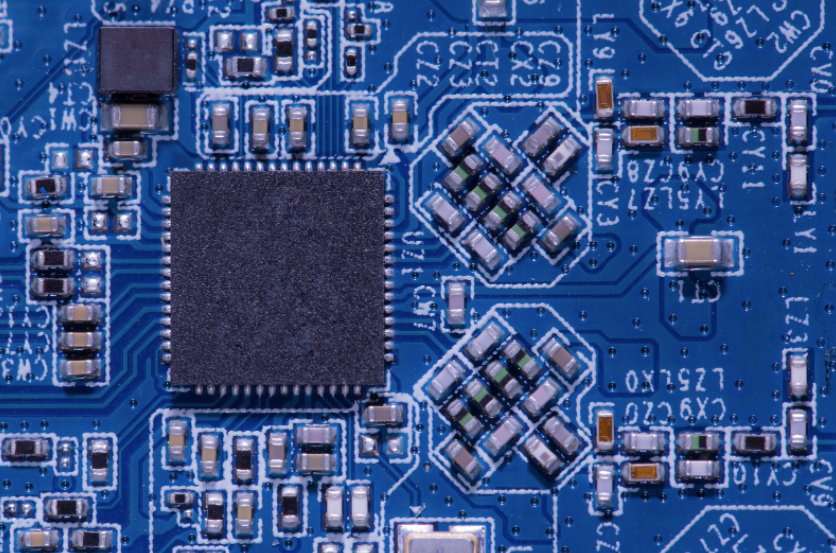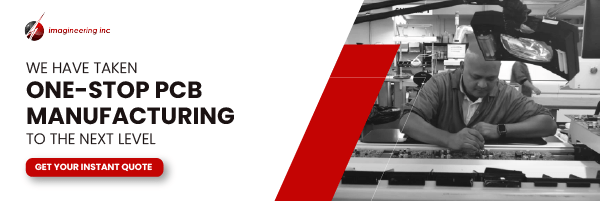As devices continue on the trend towards miniaturization, new threats emerge that prevent manufacturers from storing as much as they can into increasingly thinner packages. Among these, one threat reigns supreme: moisture related damage. Moisture sensitive devices, or MSDs, have a higher sensitivity to humidity that can render devices useless. More, as PCBs get smaller, the problem is getting bigger and bigger.
Thinner packaging isn’t the only threat to a printed circuit board’s susceptibility to moisture. As manufacturers move away from lead-based production, more heat is required to manufacture printed circuit boards.
Thankfully, steps can be taken to reduce the expenses that can be incurred with MSDs, allowing you to minimize the costs of ruined batches and lower yields.
How does moisture absorption damage occur, and what steps can you take to eliminate it? In this blog, we cover everything you need to know about moisture-sensitive devices.
What is a Moisture Sensitive Device (MSD)?
Moisture sensitive devices, or MSDs, are components that are packaged within plastic that are sensitive to damage related to atmospheric humidity. Due to the permeable nature of this packaging, moisture enters via diffusion and collects at the interfaces between different materials. This results in a reduced production yield and product defects that can significantly hamper your bottom line.
Moisture sensitivity is a growing problem thanks to factors such as higher reflow temperatures, reductions in package body thickness, the increased use of plastics, and manufacturing in high-humidity locations around the globe.
Currently, two standards exist to help guide electronics manufacturers deal with the complexities of moisture sensitivity: IPC/JEDEC J-STD-020E and IPC/JEDEC J-STD-033D.
- IPC/JEDEC J-STD-020E – This standard offers a classification system to determine initial reliability qualification. After identification, manufacturers can package, store, and handle devices to reduce thermal and mechanical damage during the reflow process.
- IPC/JEDEC J-STD-033D – This standard provides a methodology aimed at end-users for the handling, packing, shipping, and application of MSDs, as well as procedures to boost yield and limit reliability degradation.
These standards classify moisture sensitivity levels, or MSLs, on a scale from 1 to 6 depending on their susceptibility to moisture-induced damage. The highest levels have the shortest floor life – that is, devices that can withstand the least amount of exposure to the environment while being safe to reflow.
Not surprisingly, the dramatic rise in moisture related damage correlates directly with the fact that the drive for smaller packaging and bigger dies has risen dramatically. Customers are looking for lighter packages, and thinner devices are by their nature more sensitive to humidity.
This has also been influenced by the drive towards lead-free alloys. With the implementation of the Restriction on Hazardous Substances (RoHS) in the EU, 15-25% more energy is required to manufacture boards with lead-free reflow. The increase in temperature has led to more damage, and more botched yields.
According to Assembly Mag, for every 10-degree increase in temperature, the MSL rating degrades by one level. This means that even components that are normally less susceptible to damage have become increasingly likely to have moisture absorption problems.
How Moisture Absorption Damages Electronics
One of the most troubling aspects of moisture-related damage to products is that it can be difficult to detect during the PCB assembly and testing process. Any components that are sheathed in plastic or organic compounds are susceptible to this type of damage.
Moisture absorption damage typically occurs during the solder reflow process. A combination of rapid moisture expansion and mismatched materials contribute to the various types of damage induced by humidity. Ball grid array and chip-scale packages are particularly sensitive to moisture damage.
Surface-mount PCBs tend to absorb moisture more rapidly than through-hole PCBs. Surface-mount boards tend to be thinner, thus having lower fracture strength. Ball grid arrays are the most frequent culprit, as moisture can lead to component warpage in addition to the other types of damage.
Types of MSD Damage
Surface Peeling – As water vapor pressure builds during the reflow process, surface peeling can occur between the die pad and the resin. This leads to delamination due to the strain on bond wires and wire necking.
Popcorn Effect – When dampness inside of plastic is subjected to steam, stress increases and induces what is referred to as “popcorning”. Visually, this will appear as bulges on the surface of a printed circuit board.
Microcracking – As the surface of a printed circuit board expands, small cracks can extend to the outside of a package. This can be difficult to detect visually when in forms on the bottom side, where it occurs most often.
How Manufacturers Are Tackling Moisture Sensitivity in PCB Manufacturing
Currently, IPC/JEDEC J-STD-020E and IPC/JEDEC J-STD-033D offer the best information around how manufacturers and end users can limit moisture related damage in the products they manufacture and ship. Thankfully, additional procedures exist that can help ensure that yields remain undamaged throughout the printed circuit board manufacturing process. These largely relate around keeping sensitive equipment dry and protected from the environment.
The best solution currently being used today is baking the components and carefully monitoring them to ensure that moisture is controlled. A dry pack is a process that uses ovens to remove all of the moisture from packages. Then, they need to be heat- or vacuum-sealed within antistatic bags along with a dampness sign card that monitors their humidity, as well as a desiccant that will wick moisture during handling. The interior humidity of the bag should stay at less than 10% at 77°F.
Any exposure to dampness may require a re-bake, which should reverse any moisture the device has collected.
Dry boxes can be used as an alternative to bags. These provide humidity control for longer periods of time, and should maintain humidity at less than 5%. This method can prevent handling errors, and are controlled digitally. For the most extreme cases, nitrogen cabinets can be used to remove oxygen and eliminate moisture, but this method is considerably more expensive.
Testing for the Popcorn Effect
As mentioned earlier, testing MSDs for moisture related damage is not easy. Scanning Acoustic Microsopy (SAM) is one of the current methods available for detecting delamination and popcorning without destroying the devices. This method of testing can identify delamination between the lead frame, die face, paddle, heat sink, cracks, and plastic encapsulation.
Additional Tips for Moisture Control
- Every re-bake resets the timer on how much moisture a device has absorbed.
- Take additional effort to record how often a printed circuit board is exposed to moisture.
- Baking a device for too long or at temperatures that are too high can cause oxidation, and should be avoided.
Moisture Sensitive Devices and the Future of PCB Manufacturing
Moisture related damage to printed circuit boards often go neglected due to the fact that, barring the most obvious cases, it can often be completely invisible and go undetected. Yet more products are now being encapsulated in plastic, and printed circuit boards are thinner than ever. This presents a perfect storm for companies that neglect to make decisions around this growing threat.
Many experts believe that the scale of this problem is not being fully addressed, and mirrors what had to be done with ESD control in the past. Part of this ignorance stems from the fact that it often isn’t found after the assembly process. The scale of moisture related damage is far larger than many would like to believe.
At Imagineering, Inc., we are cognizant of the looming threats that can affect the production and manufacturing of printed circuit boards, and actively seek ways to ensure that the quality of your end product is as high as possible. Imagineering specializes in producing best-in-class printed circuit boards with quality and delivery you can trust. We offer same day prototypes and full turnkey assembly with turnaround in as little as 24 hours. Contact us today for more information about our services.


